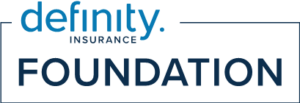Maternity and Parental Leave Benefit Top-ups
A Sector Driven Solution for Parental Leave Top-Up Benefits
Top-ups = Decent Work for new parents of all genders
Maintaining income levels for new parents of all genders is good social policy and a “decent work” employer practice. We know that new parents who take leave to care for children, most of whom are usually women, experience a significant loss of income. Also, there is evidence that top-up benefits help employers of all sizes to attract and retain top talent, lowering the high cost of employee turnover.
What is a “top-up” benefit?”
Two systems generally provide income to new parents: Maternity and Parental Leave benefits from Employment Insurance (EI) and employer “top-ups”. EI replaces 55 percent of a worker’s income up to a maximum salary of $53, 100, meaning the maximum benefit is $562 per week, for up to 40 weeks (includes maternity leave, parental leave, and parental sharing benefit for the second parent). Workers can spread out their benefit amount over a longer period of time in the extended leave option. Those that have paid into the EI program and have worked 600 hours in the 52 weeks prior can qualify for benefits.
Employers have the option of “topping-up” their workers EI maternity and parental leave benefits to reduce the difference between the EI benefits and the worker’s’ regular earnings. Top-ups are not considered extra earnings and therefore are not deducted from EI benefits, as long as they don’t exceed 100 percent of weekly earnings when combined with EI benefits. The employer finances the top-up and so chooses the rate and duration of eligibility. Some employers also offer a similar top-up to employees who do not qualify for EI.
Pooling Risk + Resources = Effectiveness
Through our proposed sector-wide program, nonprofit employers would pay premiums into a financial fund as their employees take maternity and/or parental leave the fund would “top-up” Employment Insurance (EI) benefits or fill the gap for those who don’t qualify for EI. The top-up would be a percentage of the workers’ earnings. A pooled fund would spread the cost of a top-up program across participating organizations and smooth cash flow challenges related to unpredictable parental leaves. In this way it would be affordable for employers, while boosting decent work for workers.
Learn more about how ONN came up with the idea in this 2021 blog post.
A pooled top-up fund for the sector is both possible and sustainable
Our recent research and modelling conducted by experts has determined that a pooled fund is both possible and sustainable. It is possible to pull resources together in a way that drives down the cost of top-up benefits for employers but also provides good coverage for workers. The cost for employers can potentially be less than one per cent of their monthly payroll budget, which in turn can provide workers up to 30 per cent income replacement of their average earnings (it would be up to 85 per cent for those who qualify for EI). The financial modelling also highlighted that we can do this without a waiting period or maximum insurable earnings threshold. Designed int his way, the fund could build a surplus over the years and remain sustainable.
Now, it’s ONN’s job to figure out how to make this pooled fund a reality.
Become an early adopter
Pooled funds work better when a lot of people join. If you are interested in becoming an early adopter, add your name to the list. If you want to learn more, contact us.
The exploratory phase of this work is funded by Community Foundations Canada Investment Readiness Program.



